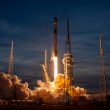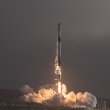Featured image credit: Rocket Lab
Lift Off Time | March 24, 2023 – 09:14 UTC | 22:14 NZDT |
|---|---|
Mission Name | The Beat Goes On, two Earth observation microsatellites for BlackSky’s constellation |
Launch Provider | Rocket Lab |
Customer | Spaceflight Inc. for BlackSky |
Rocket | Electron |
Launch Location | Launch Complex-1B, Māhia Peninsula, New Zealand |
Payload mass | 120 kg (~260 Ib) |
Where did the satellites go? | 450 km circular low Earth orbit (LEO) at a 42° inclination |
Did they attempt to recover the first stage? | Yes |
Where did the first stage land? | It softly splashed down for a marine recovery |
Did they attempt to recover the fairings? | No |
Were these fairings new? | Yes |
This was the: | – 3rd Rocket Lab launch of 2023 – 35th Electron launch – 45th orbital launch attempt of 2023 |
Where to re-watch | Official replay |
How Did It Go?
Rocket Lab successfully launched its The Beat Goes On mission which lifted off from Launch Complex-1, Māhia Peninsula, New Zealand. On The Beat Goes On mission, Electron carried two Earth-observation microsatellites for BlackSky’s constellation. This mission marked the third launch for the company in 2023 and saw a marine recovery of the first stage after it returned to Earth under a parachute.

The Beat Goes On Mission
BlackSky
BlackSky is a Seattle-based leading provider of real-time geospatial intelligence that uses its Gen-2 smallsats to detect objects of interest. These smallsats are designed and produced by its partner, LeoStella. BlackSky’s constellation gathers observations from space, air, and various terrestrial sensors and can image a location multiple times a day.
Once in orbit, BlackSky’s two Gen-2 satellites capture images of Earth with sub-meter resolution. The company uses artificial intelligence (AI) and machine learning (ML) to handle this universe of data in the most efficient way. Using AI/ML algorithms, BlackSky’s analytics platform (Spectra AI) can track the world’s news for emerging events and task microsatellites to image them, which provides time-sensitive and critical information to early responders.
Payload
This section is based on the mission Running Out of Toes.
The Beat Goes On is a dedicated mission to lift two 60 kg microsatellites for BlackSky’s global constellation. Seattle-based Spaceflight Inc. is responsible for arranging the launch, as well as for the mission management and integration services for BlackSky.
This is not the first time Rocket Lab provided launch services for BlackSky. Nine of their Earth-observation satellites had already been deployed by Electron across 2019-2022, including such missions as Love At First Insight, A Data With Destiny, and Without Mission a Beat. The Beat Goes On was the final mission of a multi-launch agreement with Spaceflight Inc. that brought the number of satellites in the constellations to 16.
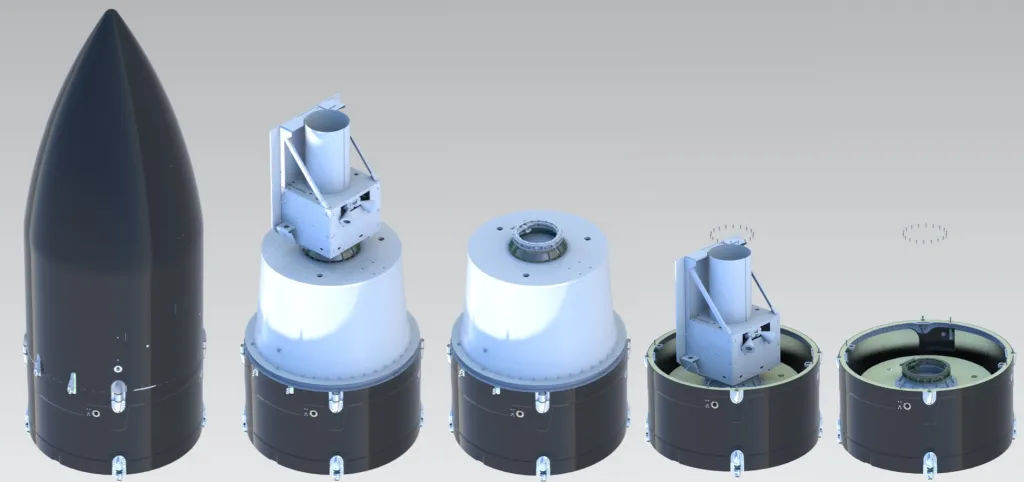
For this mission, Rocket Lab used an interesting Russian doll-like payload configuration in the fairing. BlackSky’s two microsatellites were double stacked on top of each other using another payload adapter for deployment from Electron’s Kick Stage.
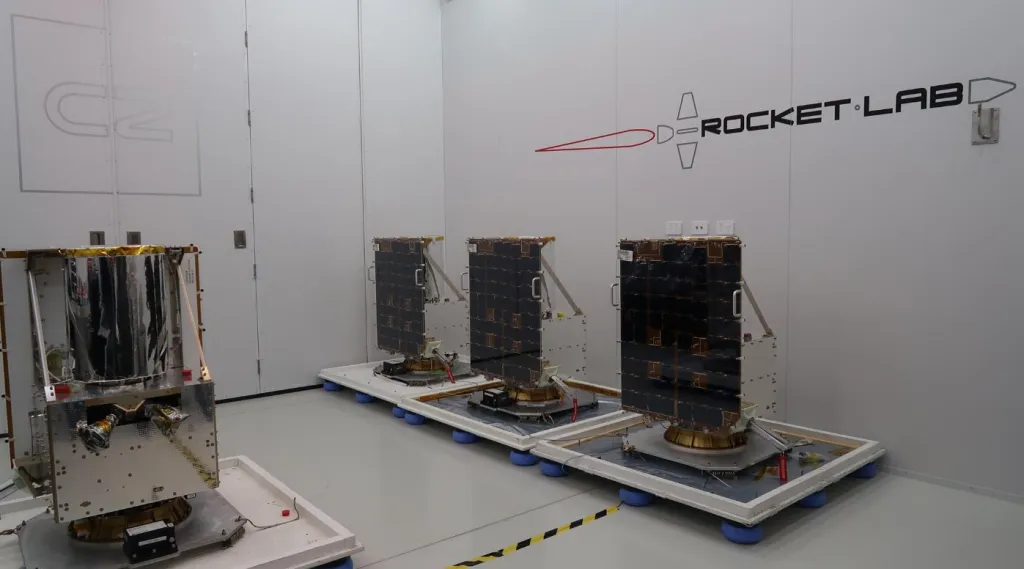
In addition, starting from the Love At First Insight mission, Electron’s fairing saw some updates to optimize space for the payload. In particular, the company added length to it and modified the nose.
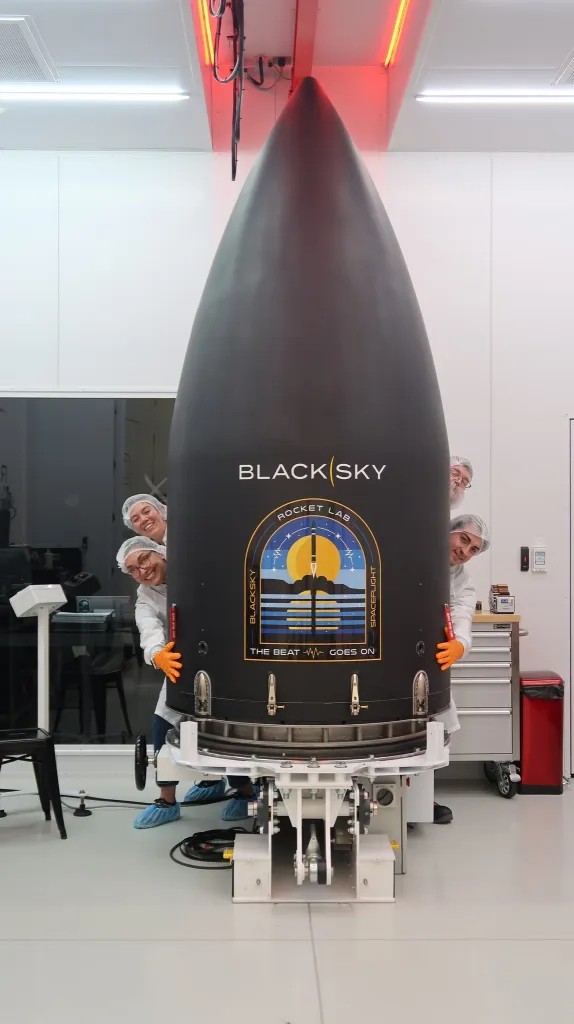
Rocket Lab’s Recovery Program
The company revealed its plans for the recovery program in 2019. The global aim of this program is to safely recover and re-fly Electron’s first stage. This would allow the company to increase launch cadence even further by reducing production time spent on building new first stages from scratch.
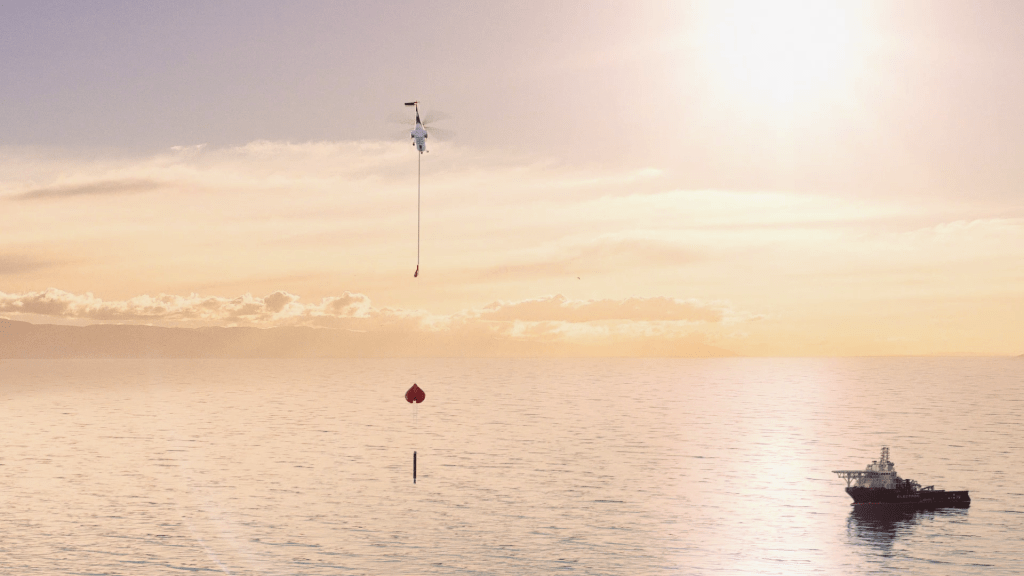
Rocket Lab’s recovery program is divided into two phases. The first one consisted of three ocean splashdown recovery missions (16th, 20th, and 22nd missions), where a full Electron first stage was recovered from the water and shipped back to the production complex for closer inspection. On these flights, Rocket Lab gathered the necessary data needed for understanding the recovery process and introducing updates to the vehicle’s design. For example, the Love At The First Insight mission featured an advanced parachute, improvements to the heat shield, and added thermal protection system. Check out their demo video that illustrates all steps of the recovery program!
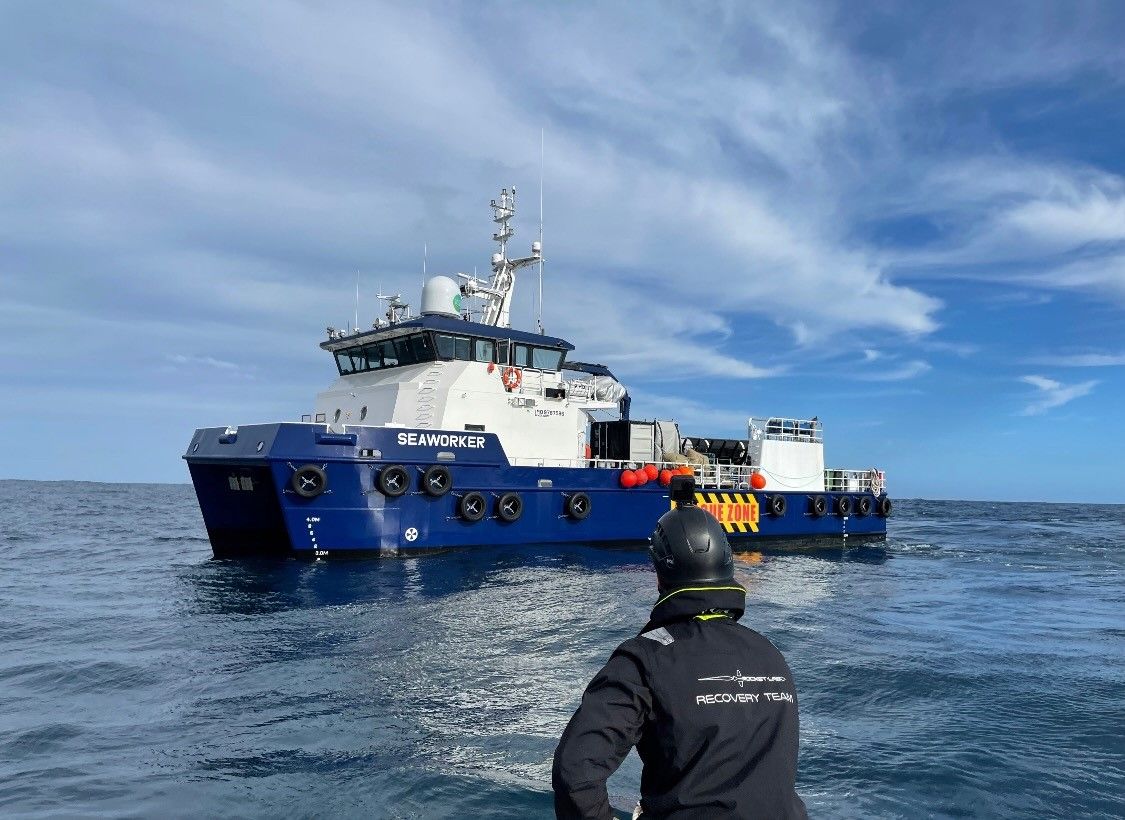
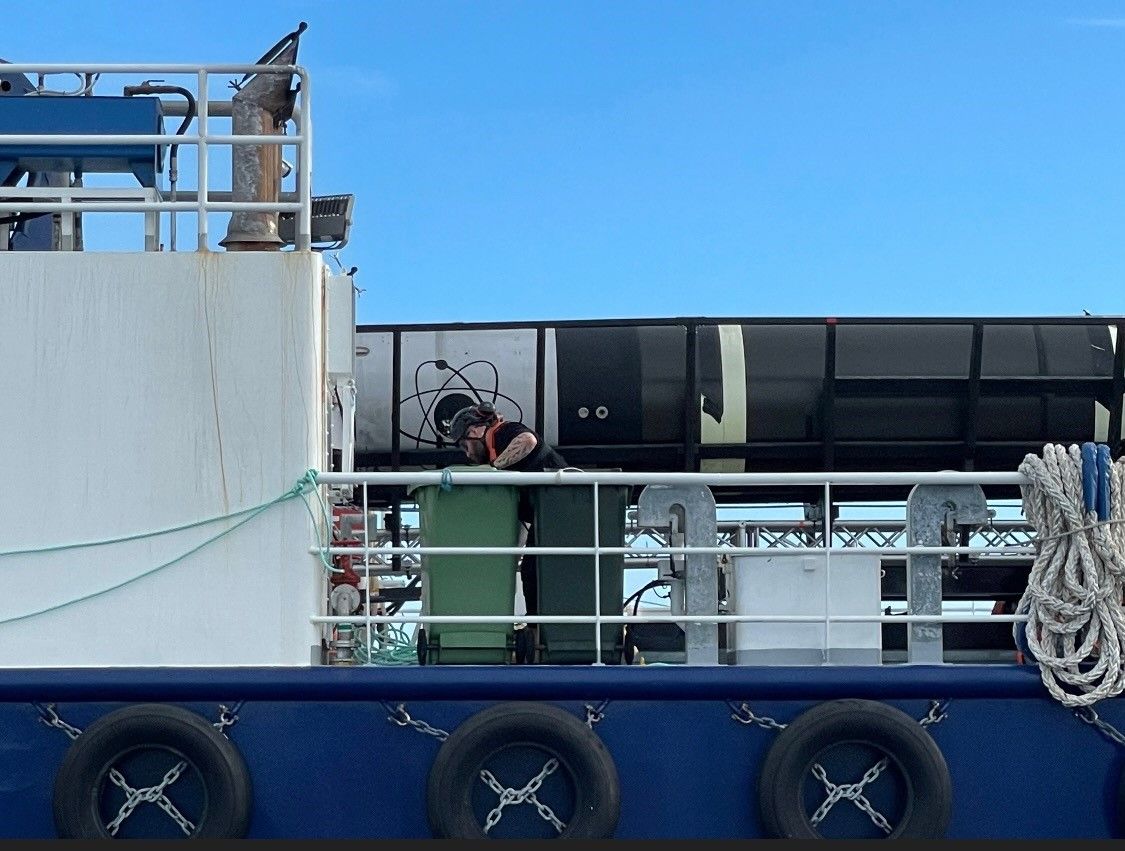
Recovery Attempts
The Love At The First Insight mission had concluded the first phase of the recovery program and for the first time included a helicopter in the recovery process by observing Electron’s descent. Even before that, Rocket Lab performed many successful helicopter captures with replica stages.
The There and Back Again mission marked the first attempt of a mid-air helicopter capture of the Electron launch vehicle as it returned to Earth from space. The mid-air capture was successful; however, shortly after the catch, the pilot detected different load characteristics than experienced in previous recovery tests. This led to a release for a marine recovery.
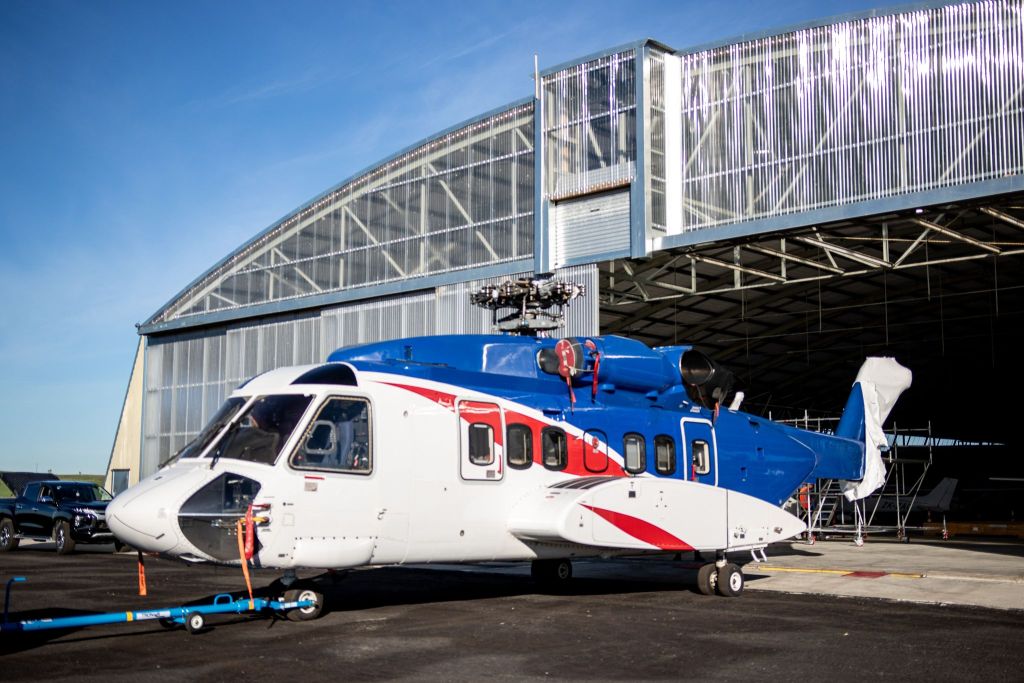
The latest recovery mission Catch Me If You Can did not achieve the mid-air catch due to a telemetry loss during Stage 1 reentry.
On The Beat Goes On mission, the company conducted a marine recovery operation to return the first stage to its manufacturing facilities after returning to Earth under a parachute.
Timeline
Pre-Launch
| Hrs:Min:Sec From Lift-Off | Events |
| – 06:00:00 | Road to the launch site is closed |
| – 04:00:00 | Electron is raised vertical, fueling begins |
| – 02:30:00 | Launch pad is cleared |
| – 02:00:00 | LOx load begins |
| – 02:00:00 | Safety zones are activated for designated marine space |
| – 00:30:00 | Safety zones are activated for designated airspace |
| – 00:18:00 | GO/NO GO poll |
| – 00:02:00 | Launch auto sequence begins |
Launch
| Hrs:Min:Sec From Lift-Off | Events |
| 00:00:00 | Liftoff |
| +00:02:25 | Main Engine Cut Off (MECO) on Electron’s first stage |
| +00:02:28 | Stage 1 separates from Stage 2 |
| +00:02:31 | Electron’s Stage 2 Rutherford engine ignites |
| +00:03:09 | Fairing separation |
| +00:06:16 | Battery hot-swap |
| +00:09:10 | Second Engine Cut Off (SECO) on Stage 2 |
| +00:09:14 | Stage 2 separation from Kick Stage |
| +00:53:52 | Kick Stage Curie engine ignition |
| +00:57:28 | Curie engine cut off |
| ~+00:57:28 | Payload deployed |
What Is Electron?
Rocket Lab’s Electron is a small-lift launch vehicle designed and developed specifically to place small satellites (CubeSats, nano-, micro-, and minisatellites) into LEO and Sun-synchronous orbits (SSO). Electron consists of two stages with optional third stages.
Electron is about 18.5 meters (60.7 feet) in height and only 1.2 meters (3.9 feet) in diameter. It is not only small in size, but also light-weighted. The vehicle structures are made of advanced carbon fiber composites, which yields an enhanced performance of the rocket. Electron’s payload lift capacity to LEO is 300 kg (~660 lbs).
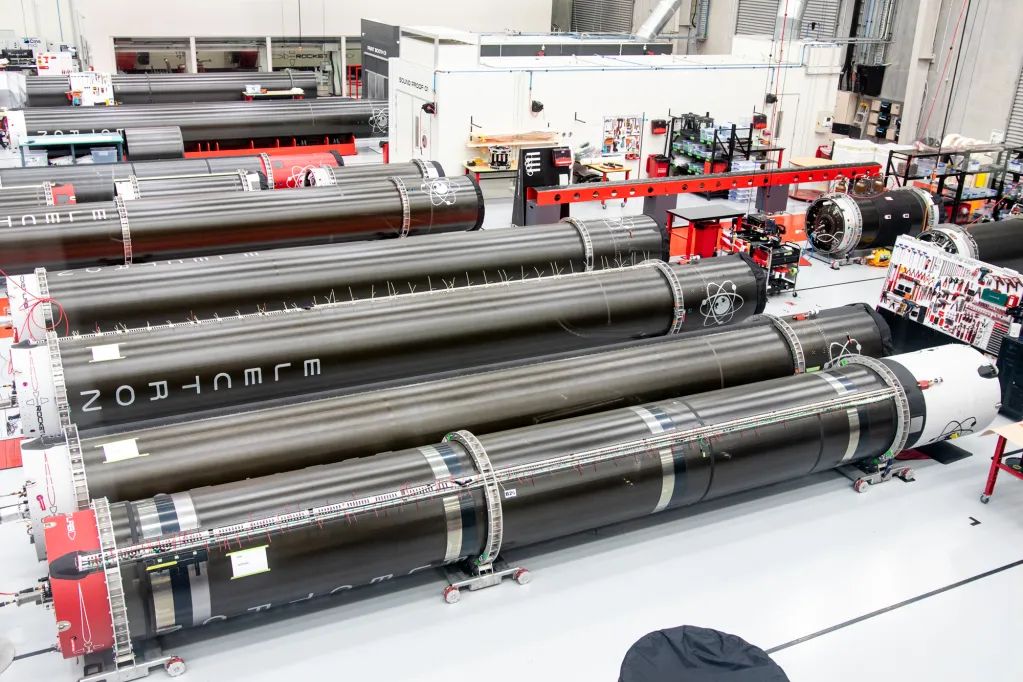
The maiden flight It’s A Test was launched on May 25, 2017, from Rocket Lab’s Launch Complex-1 (LC-1) in New Zealand. On this mission, a failure in the ground communication system occurred, which resulted in the loss of telemetry. Even though the company had to manually terminate the flight, there was no larger issue with the vehicle itself. Since then, Electron has flown a total of 35 times (32 of them were fully successful) and delivered 159 satellites into orbit.
First And Second Stage
| First Stage | Second Stage | |
|---|---|---|
| Engine | 9 Rutherford engines | 1 vacuum optimized Rutherford engine |
| Thrust Per Engine | 24 kN (5,600 Ibf) | 25.8 kN (5,800 Ibf) |
| Specific Impulse (ISP) | 311 s | 343 s |
Electron’s first stage is composed of linerless common bulkhead tanks for propellant and an interstage, and powered by 9 sea-level Rutherford engines. The second stage also consists of tanks for propellant (~2,000 kg of propellant) and is powered by a single vacuum-optimized Rutherford engine. The main difference between these two variations of the Rutherford engine is that the latter has an expanded nozzle that results in improved performance in near-vacuum conditions.
For the Love At First Insight mission, the company introduced an update to the second stage by stretching it by 0.5 m. Moreover, they flew an Autonomous Flight Termination System (AFTS) for the first time.
Rutherford Engine
Rutherford engines are the main propulsion source for Electron and were designed in-house, specifically for this vehicle. They are running on rocket-grade kerosene (RP-1) and liquid oxygen (LOx). There are at least two things about the Rutherford engine that make it stand out.
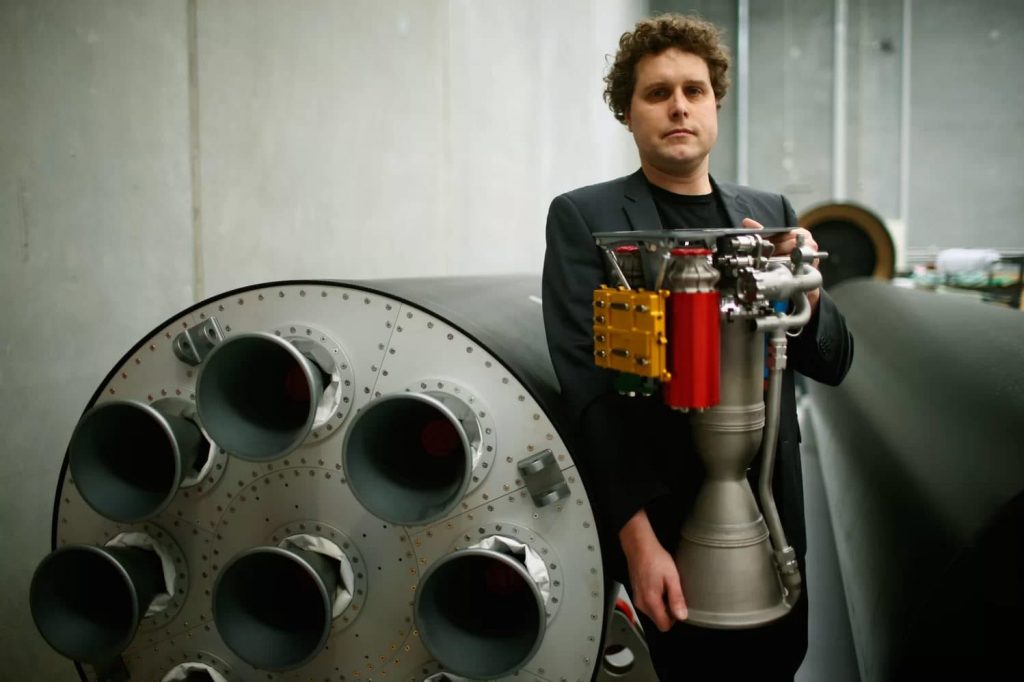
Firstly, all primary components of Rutherford engines are 3D printed. Main propellant valves, injector pumps, and an engine chamber are all produced by electron beam melting (EBM), which is one of the variations of 3D printing. This manufacturing method is cost-effective and time-efficient, as it allows to fabricate a full engine in only 24 hours.
Rutherford is the first RP-1/LOx engine that uses electric motors and high-performance lithium polymer batteries to power its propellant pumps. These pumps are crucial components of the engine as they feed the propellants into the combustion chamber, where they ignite and produce thrust. However, the process of transporting liquid fuel and oxidizer into the chamber is not trivial. In a typical gas generator cycle engine, it requires additional fuel and complex turbomachinery just to drive those pumps. Rocket Lab decided to use battery technology instead, which allowed for eliminating a lot of extra hardware without compromising performance.
Different Third Stages
Kick Stage
Electron has optional third stages, also known as the Kick Stage, Photon, and deep-space version of Photon. The Kick Stage is powered by a single Curie engine that can produce 120 N of thrust. Like Rutherford, it was designed in-house and fabricated by 3D printing. Apart from the engine, the Kick Stage consists of carbon composite tanks for propellant storage and six reaction control thrusters.
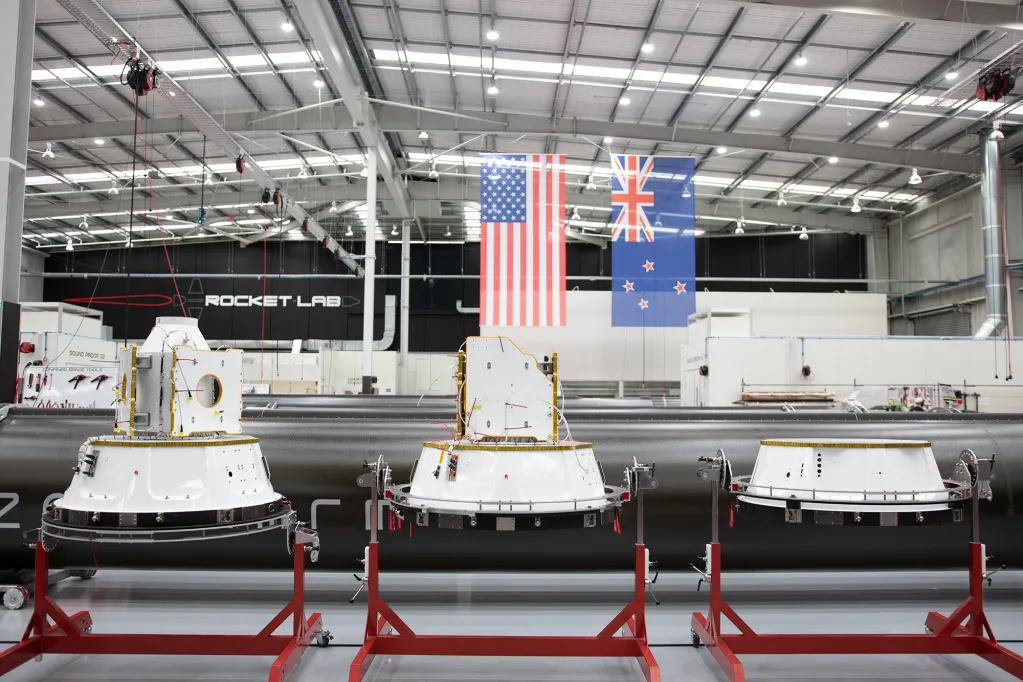
In its standard configuration, the Kick Stage serves as in-space propulsion to deploy Rocket Lab’s customers’ payloads to their designated orbits. It has the re-light capability, meaning the engine can re-ignite several times to send multiple payloads into different individual orbits. A recent example includes Electron’s 19th mission, They Go Up So Fast, launched in 2021. The Curie engine was ignited to circularize the orbit before deploying a payload to 550 km. Curie then re-lighted to lower the altitude to 450 km, and the remaining payloads were successfully deployed.
Photon And Deep-space Photon
Rocket Lab offers an advanced configuration of the Kick Stage, its Photon satellite bus. Photon can accommodate various payloads and function as a separate operational spacecraft supporting long-term missions. Among the features that it can provide to satellites are power, avionics, propulsion, and communications.
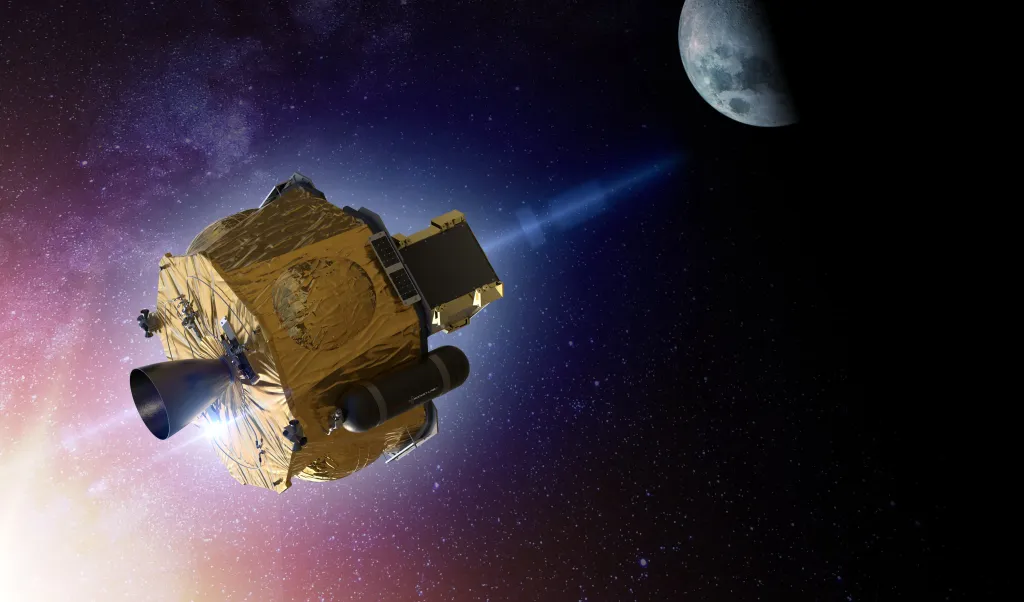
But there is more to it. Photon also comes as a deep-space version that will carry interplanetary missions. It is powered by a HyperCurie engine, an evolution of the Curie engine. The HyperCurie engine is electric pump-fed, so it can use solar cells to charge up the batteries in between burns. It has an extended nozzle to be more efficient than the standard Curie and runs on some “green hypergolic fuel” that Rocket Lab has not yet disclosed.



